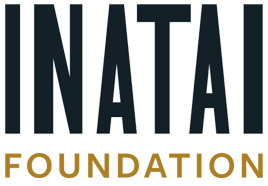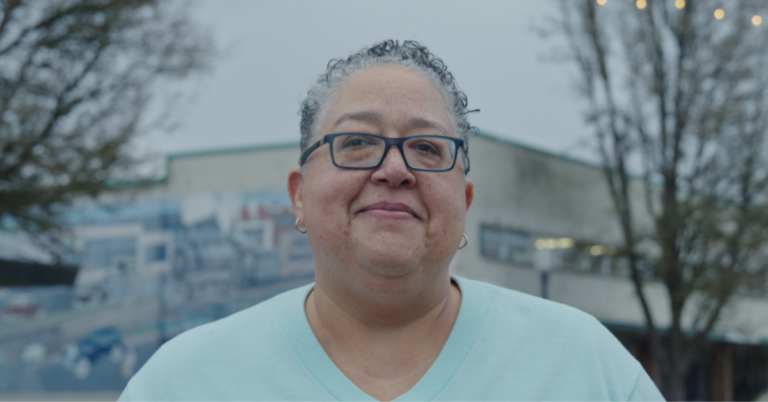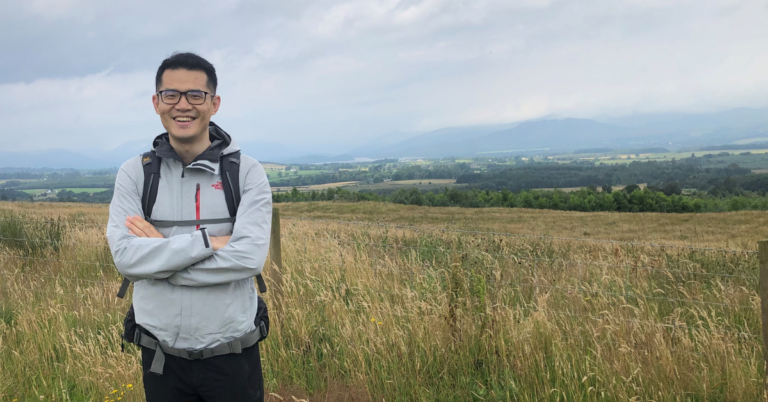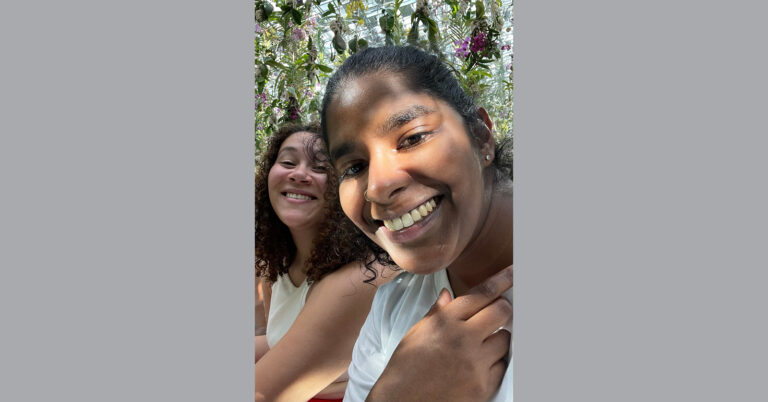Until Feb. 1, 2023, we were Group Health Foundation. This post was written under our former identity. To learn more about our new name, read our announcement here.
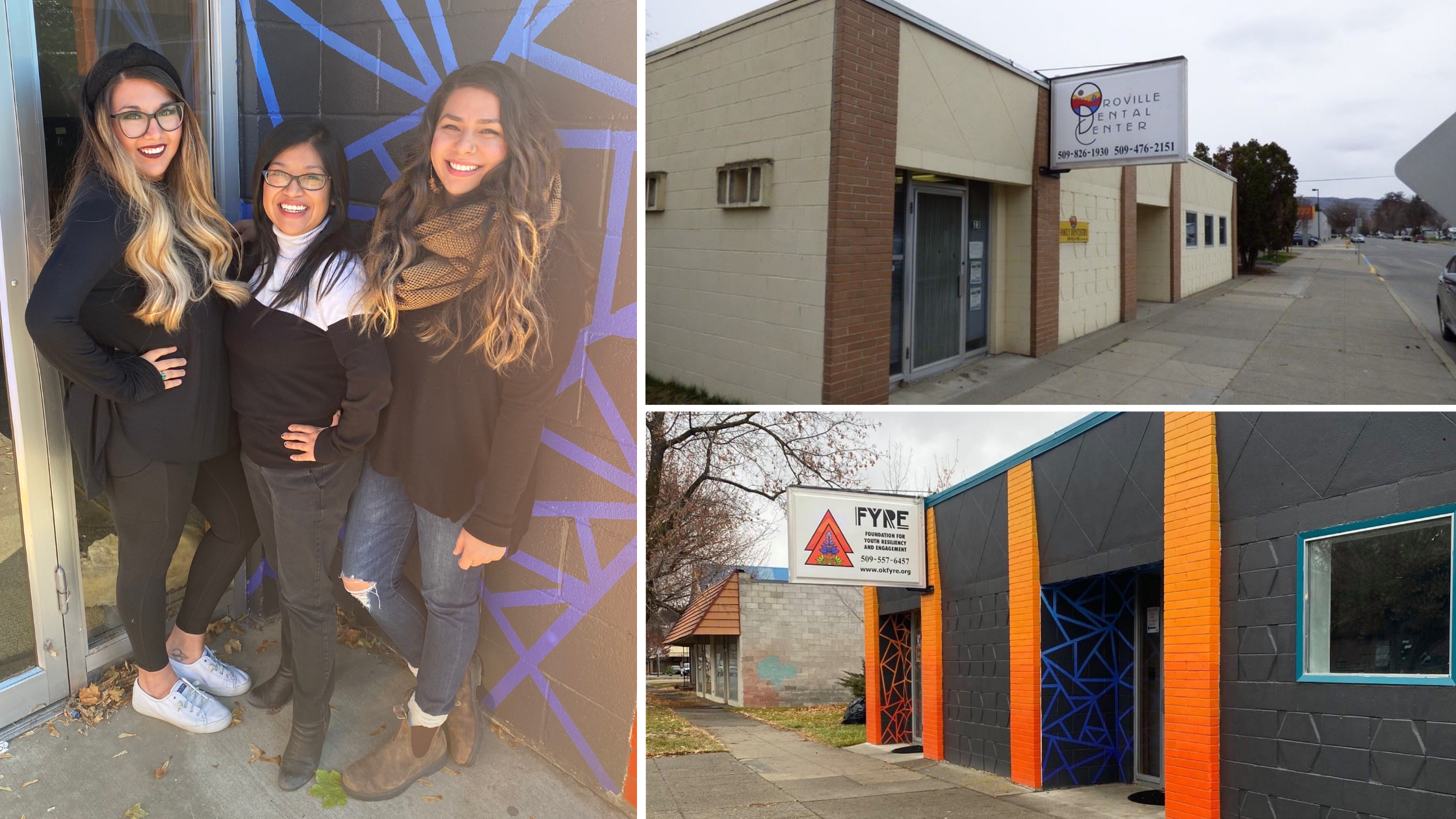
The three co-founders of FYRE—Amitie, Mady, and Michelle Sandoval—with a “before” and “after” of their newly renovated building. Photos courtesy of FYRE.
Connection making and community building are integral to the work for health equity and justice. Group Health Foundation provides sponsorship support for gatherings—in-person or virtual—that benefit organizations and the communities they serve, while making progress toward a better future in Washington State. Read “‘We wanted to raise joy’: Three sponsorship recipients on the events they’ve hosted” to learn about other organizations serving their communities.
Mady Sandoval co-founded FYRE to serve Okanogan County and designed the programming based on her experiences growing up there. Primarily working with Latinx, Indigenous, and LGBTQ+ youth, FYRE has a reflective staff to support young people and their families with a variety of services, including parent-teacher conference advocacy, homelessness referrals, and clothing assistance. FYRE also has a dedicated and safe space for young people to socialize and where homework support, snacks and meals, and LGBTQ+ support groups are offered. FYRE opened its doors with a two-month soft launch that began in October 2020.
Q. What was it like launching FYRE during a pandemic?
A. It was a really tough decision to do that soft opening. What mattered was opening and starting to serve youth immediately. We wanted to do a big haunted house, a week of community walkthroughs and tours, and kind of show everyone what we’re working on and what our hope is. Then it became very clear that that’s not going to happen because of the pandemic. We needed to pivot, figure out how we will fundraise, and how do we even talk about FYRE when we’re so brand new. Our Facebook page garnered a ton of support right away. I think we got 500 followers within a week or two weeks.
Then we had groups and organizations reaching out to us that were eager to work together. We met with them in different formats and we talked about why FYRE is needed, our experiences as young people here, and how this program specifically would help us. Then we had some Zoom presentations for people who wanted to know how to plug in. It felt so awesome to see our brown community showing up like that. It is unheard of—and not because they don’t want to—but I think just because they don’t always feel welcome. It was just awesome, having people from varying backgrounds and income levels supporting us.
We also decided to do a big fundraising campaign. And so that was nerve-wracking. With the help of 15 others, we would do Zoom calls to connect and figure out our fundraising strategies. We ran a fundraiser called “It Takes a Village,” because we just do believe that’s what it takes to support our youth. The goal was $25,000, which we thought was pretty lofty, but we ended up with $39,000 and it felt good.
Q. How did you get the word out to young people?
A. We were able to do some pretty fun giveaways that helped us get our Snapchat and Instagram game going because Facebook is not a relevant youth platform anymore. And we talked to the schools. That was super neat because they sent flyers through students’ emails. We also have three youth leadership groups, and we’re paying them $25 an hour to be part of it. We have one group that’s small enough that we can meet in person, which is helpful because some do come from homes that are really challenging right now. We’re also working on putting together study pods. There are not many options for youth to get their community service hours in because of COVID-19. So that means they’re likely violating their probation and getting into more trouble. So, we’re signing up to be a community service place for juvenile detention.
Most of our time is spent on relationship building, getting together, going over different resources, getting to know young people, and then doing follow up connections. They know that they have a place to come. We have youth who come in to just warm up in our lobby and hang out with us for a little bit.
Q. It sounds like you accomplished so much in your first few months. Anything you’d like to share about what you learned?
A. I would say video—gosh, we did so many Zoom calls—every single time we regretted not videoing it. So many people said, “That was so helpful! That’s so much context, so much passion!” And later, I wish we could’ve posted it. I think if you’re doing a presentation about what you’re about or something new that you’re doing, it might be helpful to either make a video or record a Zoom call.
